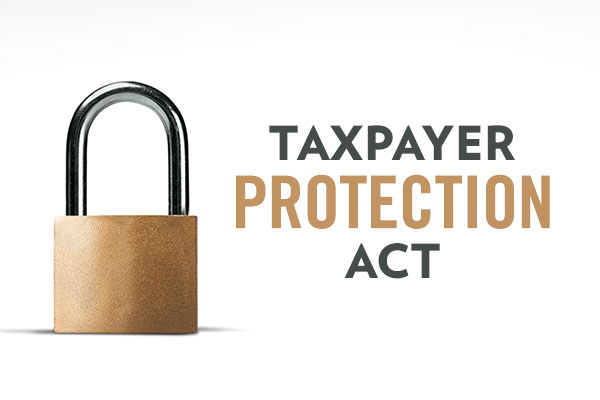Fact Sheet

The Taxpayer Protection Act: A Legislator’s Guide
Pennsylvania’s high state and local tax burden is the consequence of a decades-long spending binge. Pennsylvanians currently pay $4,589 per person in state and local taxes, which equals 10.2 percent of residents’ total income. This trend must be reversed by restraining spending growth through long-term reforms like the Taxpayer Protection Act (TPA).
Pennsylvania’s Overspending Problem
- Over the last decade and a half, total state spending growth has outpaced the economy
- The commonwealth’s total operating budget, which includes the General Fund and Shadow Budget, has grown by an inflation-adjusted 202 percent since 1970.
A Responsible Solution to Pennsylvania’s Financial Challenges
- The Taxpayer Protection Act’s spending limits would begin to reverse Pennsylvania’s unsustainable spending trend. The TPA does not mandate cuts to government spending. It slows the growth of spending by tying increases to the rate of inflation and population growth or personal income growth.
- Three pieces of legislation to implement the TPA are under consideration:
- House Bill 110, sponsored by Rep. Ryan Warner, constitutionally limits General Fund spending growth. The legislation passed the House in December and now sits in the Senate.
- Senate Bill 173, sponsored by Sen. Camera Bartolotta, constitutionally limits General Fund spending and spending approved by “executive authorizations,” excluding federal funds.
- Senate Bill 7, sponsored by Sen. Mike Folmer, mirrors the spending limits imposed by SB 173 in statute and authorizes the transfer of any surplus to the following funds:
- Budget Stabilization Reserve Fund (25 percent)
- Taxpayer Protection Fund (25 percent)
- PSERS/SERS Unfunded Accrued Liability Fund (50 percent)
- The TPA limits spending growth to a formula set by law. Under HB 110, the formula is determined by calculating the combined rate of inflation and population growth over a three-year period.
- SB 173 and SB 7 instruct the legislature to calculate the formula using either the combined rate of inflation and population growth or personal income growth over a three-year period—whichever is lower.
- The TPA requires government to prioritize spending. By enacting fiscal guardrails, the state will need to thoroughly review state programs to ensure spending growth is kept within the TPA index.
- The TPA-imposed spending limit may be exceeded if approved by a supermajority of the General Assembly. HB 110 requires a three-fourths majority. SB 173 and SB 7 require a two-thirds majority.
The Impact of the TPA
- States that reasonably limit spending growth are better able to maintain a relatively low tax burden, which is critical to economic growth.
- Under the TPA formula, lawmakers could increase General Fund spending in the 2018-19 budget by $422 million.
- If the TPA had been applied to the General Fund from FY 2003-04 through FY 2017-18, a cumulative $32.4 billion—or more than $10,000 per family of four—would have remained in the hands of taxpayers rather than state government.
- If the TPA had been enacted in FY 2003-04, spending could have increased by $8 billion through FY 2017-18. Instead, it climbed by more than $10.1 billion over the same period.
- The chart below traces the disparity between state spending and a TPA budget since 2003. Note spending rose dramatically under Gov. Rendell, creating pressure for spending restraint under Gov. Corbett. Under the current administration, spending is once again tracking far above the TPA index.
Pennsylvanians Support Spending Limits
- A 2015 poll found nearly two-thirds of voters (64 percent) favor limiting the growth of state government. Support is bipartisan and consistent.
- 71 percent of Republicans, 62 percent of Democrats, and 59 percent of Independents support state spending limits.
- When similar questions about state spending limits were asked on five separate occasions (2005, 2008, 2010, 2012, 2014), support ranged from 59 percent to 70 percent of all voters.
Conclusion
By controlling government spending, lawmakers can restore Pennsylvania’s fiscal health and pave the way for tax reform that will benefit working Pennsylvanians. Embracing fiscal responsibility and a pro-growth tax code will make the commonwealth a more attractive place to live and work.